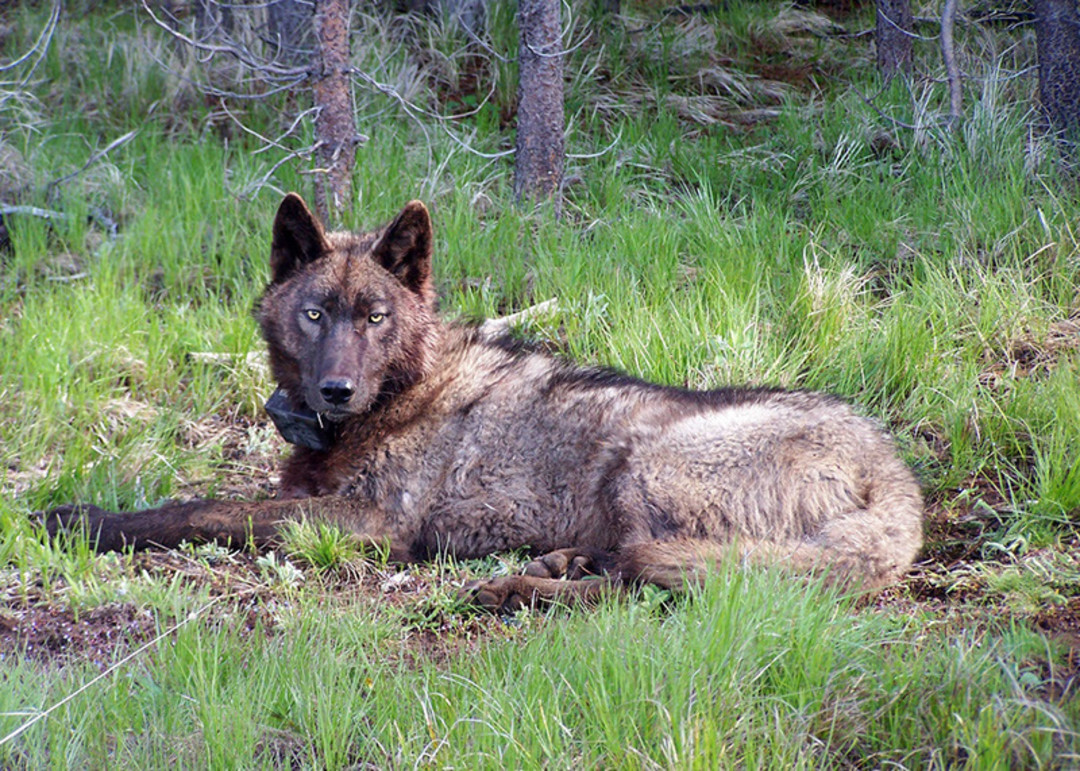Is the Slow Comeback of the Oregon Wolf Now in Jeopardy?

OR25, a male member of the Imnaha Pack
“People sometimes ask us, ‘What do I do if I come across a wolf in the wild?’ We say, ‘Grab your camera.’ You have more to fear driving to the trailhead than you do if you’re lucky enough to see a wolf on the trail,” says Rob Klavins, NE Oregon Field Coordinator for conservationist group Oregon Wild.
Gray wolves have a fraught history in Oregon. The native species, which once occupied more than 2/3 of the country and thrived in our fair state, was hunted to near-extinction in the early 1900s after government-supported eradication campaigns offered bounties for dead wolves up until 1947, when the last Oregon wolf was killed. These predator control programs were largely the result of livestock owners losing domesticated animals to hungry wolves—a problematic image of the “big bad wolf” that Klavins says remains engrained in parts of our society today.
Wolves came bounding back into the Oregon imagination in 2011, when the appearance of the first wolf west of the Cascades since that last government bounty was celebrated by conservationists and the government alike. That pioneer wolf, referred to as OR-7 and later nicknamed “Journey,” signaled the beginning of a wolf comeback in the state.
“Over the course of the last 3 years, Oregon has been the only state with a meaningful wolf population that isn’t purposefully killing them,” Klavins says.
The success of that small but growing wolf population is fragile. Earlier this year, the Oregon Department of Fish & Wildlife identified seven breeding pairs of wolves in the state. This finding indicates not only that healthy wolves are making Oregon their home, but also that the next generation of gray wolves is entering that world. According to Klavins, this milestone in gray wolf recovery is a direct result of protections outlined in the state’s 2005 Wolf Management Plan, which was revised in 2011 to include more specific language about how ranchers can legally react to wolves near their livestock.
Conversations about wolf conservation and the livestock industry go hand in hand. While wolves help to maintain a balanced ecosystem by preying on a variety of animals, they also occasionally attack livestock, sometimes leading to ranchers looking for ways to protect their livelihood.
The appearance of the new breeding pairs automatically triggered Phase 2 of the WMP, putting some of these protections in jeopardy. In Phase 1, it was legally permissible for livestock producers to fatally shoot a wolf that was in the act of biting livestock—an exception ODFW Communications Coordinator Michelle Dennehy says has never been used. In Phase 2 of the plan, however, livestock producers would be legally allowed to shoot a wolf that was in the act of chasing livestock. Phase 1 also required ranchers to use nonlethal methods to deter wolves from their property without wounding the predators, like fencing, alarm devices, reducing bone piles, and keeping dogs around to protect livestock. The ODFW says that nonlethal requirements are in place for Phase 2 of the plan and beyond, but ranchers now have more room to fatally defend their livestock as the wolf population grows.
“We want to give livestock producers as much flexibility as possible to protect their livestock,” says Dennehy. “Some nonlethal techniques work for a time but after a while the wolf figures it out and gets around it.”
Klavins finds this stipulation concerning: “If someone finds a wolf with its teeth in the rear end of their livestock, then protecting the animal seems like a very reasonable response,” he says. “But [the Phase 2 stipulation] rests entirely on the citizen not abusing the law, and also with the state to conduct a thorough investigation after the fact to make sure it doesn’t become a free pass for poaching.”
Another change: in Phase 1, ODFW could consider lethal control of a wolf after four confirmed livestock killings. In Phase 2, that number goes down to two. Last year, 18 sheep and four cattle were confirmed to be killed by wolves in Oregon.
Klavins hopes the review of the Wolf Recovery plan will result in a reaffirmation of protective measures as well as a faithful continuation of the progressive Wolf Management Plan which has resulted in the largest Oregon wolf population in more than a century.
“2015 is poised to be among the most consequential years for Oregon’s wolf recovery. A milestone is a way to mark your progress and then continue to move forward,” Klavins says. “It’s not where you do a touchdown dance, say ‘mission accomplished’ and turn back.”




